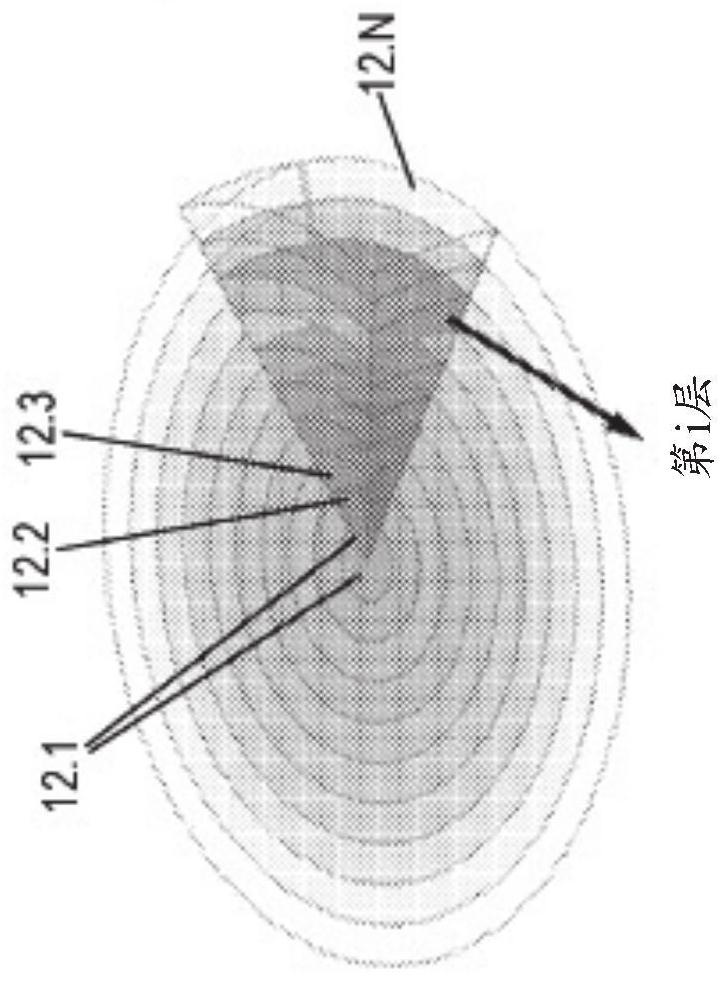Luneberg lens
A Lumberg lens, triangle technology, used in antennas, instruments, optics, etc., can solve problems such as deformation and lens performance degradation
- Summary
- Abstract
- Description
- Claims
- Application Information
AI Technical Summary
Problems solved by technology
Method used
Image
Examples
Embodiment Construction
[0050] Embodiments of the present disclosure generally relate to a Luneburg lens comprising a plurality of concentrically arranged layers, each layer being formed by a plurality of triangular regions. Lumberg lenses can be used as part of high gain lens antennas with multi-beam radiation targets for millimeter wave wireless communication applications. Antennas according to some embodiments have wide operating bandwidths, wide scanning angles, and flexible polarization matching capabilities.
[0051] will now refer to Figure 1 to Figure 4 Embodiments of Lumberg lenses are described. Lumberg lens 10 includes a plurality of concentrically arranged layers that are figure 2 are marked as 12.1 to 12.N. figure 2 A series of such layers is shown from left (innermost) to right (outermost).
[0052]Each layer 12.1 to 12.N is formed by a plurality of triangular regions 14. The triangular regions 14 form a tile of approximately spherical surfaces. For example, the plurality of tr...
PUM
 Login to View More
Login to View More Abstract
Description
Claims
Application Information
 Login to View More
Login to View More - R&D
- Intellectual Property
- Life Sciences
- Materials
- Tech Scout
- Unparalleled Data Quality
- Higher Quality Content
- 60% Fewer Hallucinations
Browse by: Latest US Patents, China's latest patents, Technical Efficacy Thesaurus, Application Domain, Technology Topic, Popular Technical Reports.
© 2025 PatSnap. All rights reserved.Legal|Privacy policy|Modern Slavery Act Transparency Statement|Sitemap|About US| Contact US: help@patsnap.com



